The subcompact SUV market continues to grow as consumers seek versatile vehicles that blend comfort, performance, and technology. Two notable contenders in this segment are the Audi Q2 and the Volvo XC40. Both models offer unique features and innovations, making them attractive options for modern drivers. In this comparison, we’ll delve into the key aspects of these two vehicles, focusing on technical specifications, design, and innovations.
Audi Q2 vs Volvo XC40 – Which one offers the better deal?
Everyday use, family trips or long-distance drives – here’s where the differences show.
Discover whether Audi Q2 or Volvo XC40 fits your lifestyle better.
Performance and Engine Options
The Audi Q2 stands out with its diverse range of engine options, offering both petrol and diesel variants. The Q2’s engine lineup includes power outputs ranging from 116 HP to an impressive 300 HP, catering to different driving preferences. It features manual and dual-clutch automatic transmissions, with drive configurations available in both front-wheel and all-wheel drive. This versatility allows the Q2 to appeal to a broad audience, from urban commuters to more adventurous drivers.
In contrast, the Volvo XC40 offers petrol hybrid engines (MHEV) with two primary power outputs: 163 HP and 197 HP. The XC40 comes exclusively with a dual-clutch automatic transmission and front-wheel drive. While it may not present as many options as the Q2, the XC40’s engine is designed for efficiency and responsive performance, with a commendable acceleration of 0-100 km/h in as little as 7.6 seconds.
Fuel Efficiency
When it comes to fuel economy, the Audi Q2 demonstrates a range of consumption figures from 4.8 to 8.4 L/100km, depending on the chosen engine and driving mode. The Q2’s efficient diesel options and petrol engines make it a suitable choice for those looking to balance performance with fuel savings.
On the other hand, the Volvo XC40 maintains a competitive edge in fuel efficiency, boasting a combined consumption of approximately 6.5 L/100km. While the XC40’s petrol hybrid system contributes to reduced emissions, it does provide a slightly higher fuel consumption compared to some of the Q2’s diesel offerings.
Design and Interior
Both the Audi Q2 and Volvo XC40 deliver distinct designs that reflect their respective brands' philosophies. The Audi Q2 flaunts a sporty exterior with sharp lines and a bold grille. Inside, the Q2 is known for its premium materials and advanced infotainment system, creating a modern and luxurious feel. With a trunk capacity of 405 liters, it also offers practical cargo space for everyday use.
The Volvo XC40, conversely, embraces a more Scandinavian design ethos with its clean lines and distinctive rear taillights. Inside, the XC40 boasts a minimalist and functional layout, highlighted by high-quality materials and a user-friendly Sensus infotainment system. With a trunk capacity of 452 liters, the XC40 slightly edges out the Q2 in terms of storage space, making it a practical option for those who often carry larger loads.
Safety and Technology Innovations
Volvo has long been synonymous with safety, and the XC40 is no exception. It comes equipped with a suite of advanced safety features, including automated emergency braking, lane-keeping assist, and the optional Pilot Assist, which offers semi-autonomous driving capabilities. The XC40's commitment to safety has resulted in top ratings in various crash tests.
The Audi Q2 doesn't fall short in this category either, featuring an array of safety technologies like Audi Pre Sense, adaptive cruise control, and a solid build that enhances passenger protection. Additionally, Audi's Virtual Cockpit, a customizable digital display, enhances the driver’s experience while navigating and managing vehicle settings.
Conclusion
Choosing between the Audi Q2 and the Volvo XC40 ultimately boils down to personal preferences and priorities. The Q2 offers a broader array of engine options, refined performance, and sporty design, making it an appealing choice for drivers who value versatility and performance.
In contrast, the XC40 excels in safety, innovative technology, and a more spacious interior, appealing to those who prioritize these aspects in their vehicle. Both SUVs are strong contenders in the subcompact market, ensuring that prospective buyers will have plenty to consider when making their choice.
Here’s where it gets real: The technical differences in detail
Costs and Efficiency:
When it comes to price and running costs, the biggest differences usually appear. This is often where you see which car fits your budget better in the long run.
Audi Q2 has a significantly advantage in terms of price – it starts at 24900 £, while the Volvo XC40 costs 36800 £. That’s a price difference of around 11905 £.
Fuel consumption also shows a difference: Audi Q2 manages with 4.80 L and is therefore clearly perceptible more efficient than the Volvo XC40 with 6.50 L. The difference is about 1.70 L per 100 km.
Engine and Performance:
Under the bonnet, it becomes clear which model is tuned for sportiness and which one takes the lead when you hit the accelerator.
When it comes to engine power, the Audi Q2 has a clearly perceptible edge – offering 300 HP compared to 197 HP. That’s roughly 103 HP more horsepower.
In acceleration from 0 to 100 km/h, the Audi Q2 is decisively quicker – completing the sprint in 4.90 s, while the Volvo XC40 takes 7.60 s. That’s about 2.70 s faster.
In terms of top speed, the Audi Q2 performs distinct better – reaching 250 km/h, while the Volvo XC40 tops out at 180 km/h. The difference is around 70 km/h.
There’s also a difference in torque: Audi Q2 pulls evident stronger with 400 Nm compared to 300 Nm. That’s about 100 Nm difference.
Space and Everyday Use:
Beyond pure performance, interior space and usability matter most in daily life. This is where you see which car is more practical and versatile.
Both vehicles offer seating for 5 people.
In curb weight, Audi Q2 is distinct lighter – 1330 kg compared to 1688 kg. The difference is around 358 kg.
In terms of boot space, the Volvo XC40 offers a bit more room – 452 L compared to 405 L. That’s a difference of about 47 L.
In maximum load capacity, the Volvo XC40 performs clearly perceptible better – up to 1328 L, which is about 278 L more than the Audi Q2.
When it comes to payload, Volvo XC40 hardly perceptible takes the win – 532 kg compared to 510 kg. That’s a difference of about 22 kg.
Who comes out on top?
Overall, the Audi Q2 shows itself to be dominates this comparison and secures the title of DriveDuel Champion.
It convinces with the more balanced overall package and proves to be the more versatile choice for everyday use.
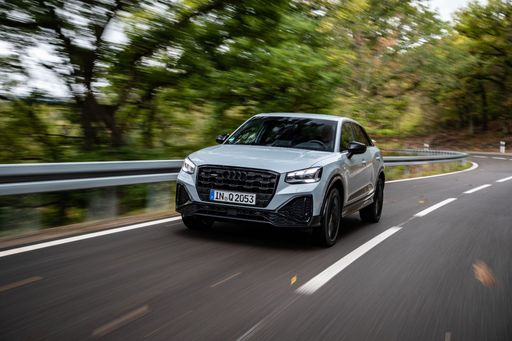 @ Audi AG
@ Audi AG
Audi Q2
Audi Q2
The Audi Q2 captures attention with its bold and distinctive design, combining compact dimensions with a sporty silhouette. Inside, the cabin boasts high-quality materials and a modern infotainment system, ensuring a comfortable driving experience. With its agile handling and efficient performance, the Q2 is a perfect urban companion for those seeking both style and functionality.
details @ Audi AG
@ Audi AG
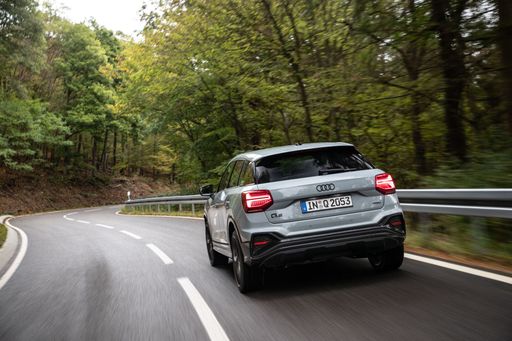 @ Audi AG
@ Audi AG
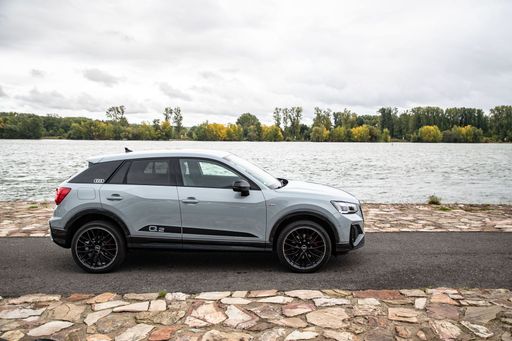 @ Audi AG
@ Audi AG
 @ Audi AG
@ Audi AG
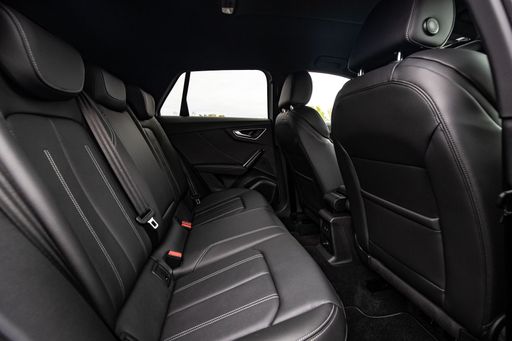 @ Audi AG
@ Audi AG
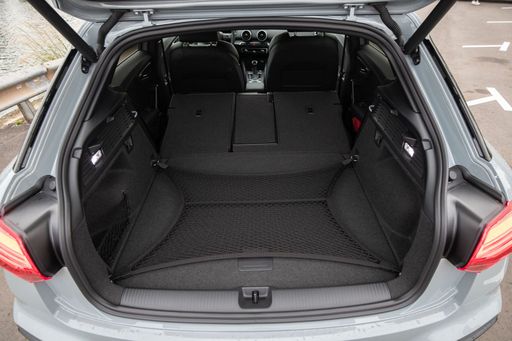 @ Audi AG
@ Audi AG
Volvo XC40
The Volvo XC40 wraps Scandinavian minimalism into a compact, city-ready SUV with a premium cabin that feels both practical and grown-up. It will suit buyers who prize safety, clever storage and a composed ride, proving that small dimensions don't mean small personality.
details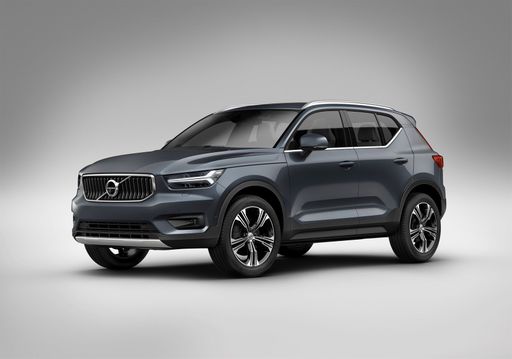 @ Volvo Cars
@ Volvo Cars
 @ Volvo Cars
@ Volvo Cars
 @ Volvo Cars
@ Volvo Cars
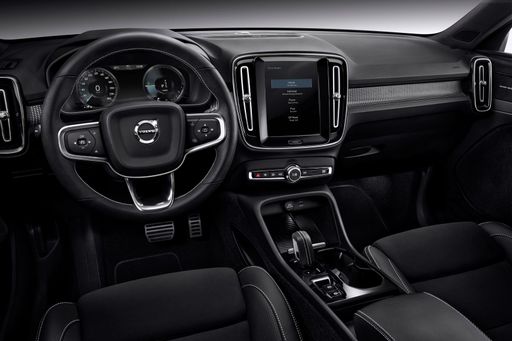 @ Volvo Cars
@ Volvo Cars
 @ Volvo Cars
@ Volvo Cars
 @ Audi AG
@ Audi AG
|
 @ Volvo Cars
@ Volvo Cars
|
|
|
|
Costs and Consumption |
|
|---|---|
|
Price
24900 - 43600 £
|
Price
36800 - 47200 £
|
|
Consumption L/100km
4.8 - 8.1 L
|
Consumption L/100km
6.50 L
|
|
Consumption kWh/100km
-
|
Consumption kWh/100km
-
|
|
Electric Range
-
|
Electric Range
-
|
|
Battery Capacity
-
|
Battery Capacity
-
|
|
co2
127 - 183 g/km
|
co2
147 - 148 g/km
|
|
Fuel tank capacity
50 - 55 L
|
Fuel tank capacity
54 L
|
Dimensions and Body |
|
|---|---|
|
Body Type
SUV
|
Body Type
SUV
|
|
Seats
5
|
Seats
5
|
|
Doors
5
|
Doors
5
|
|
Curb weight
1330 - 1610 kg
|
Curb weight
1688 kg
|
|
Trunk capacity
355 - 405 L
|
Trunk capacity
452 L
|
|
Length
4208 - 4216 mm
|
Length
4425 mm
|
|
Width
1794 - 1802 mm
|
Width
1863 mm
|
|
Height
1495 - 1508 mm
|
Height
1652 mm
|
|
Max trunk capacity
1000 - 1050 L
|
Max trunk capacity
1328 L
|
|
Payload
450 - 510 kg
|
Payload
532 kg
|
Engine and Performance |
|
|---|---|
|
Engine Type
Petrol, Diesel
|
Engine Type
Petrol MHEV
|
|
Transmission
Manuel, Automatic
|
Transmission
Automatic
|
|
Transmission Detail
Manual Gearbox, Dual-Clutch Automatic
|
Transmission Detail
Dual-Clutch Automatic
|
|
Drive Type
Front-Wheel Drive, All-Wheel Drive
|
Drive Type
Front-Wheel Drive
|
|
Power HP
116 - 300 HP
|
Power HP
163 - 197 HP
|
|
Acceleration 0-100km/h
4.9 - 10.5 s
|
Acceleration 0-100km/h
7.6 - 8.6 s
|
|
Max Speed
197 - 250 km/h
|
Max Speed
180 km/h
|
|
Torque
200 - 400 Nm
|
Torque
265 - 300 Nm
|
|
Number of Cylinders
3 - 4
|
Number of Cylinders
4
|
|
Power kW
85 - 221 kW
|
Power kW
120 - 145 kW
|
|
Engine capacity
999 - 1984 cm3
|
Engine capacity
1969 cm3
|
General |
|
|---|---|
|
Model Year
2025
|
Model Year
2024
|
|
CO2 Efficiency Class
D, F, E, G
|
CO2 Efficiency Class
E
|
|
Brand
Audi
|
Brand
Volvo
|
What drivetrain options does the Audi Q2 have?
The Audi Q2 is offered with Front-Wheel Drive or All-Wheel Drive.
The prices and data displayed are estimates based on German list prices and may vary by country. This information is not legally binding.
